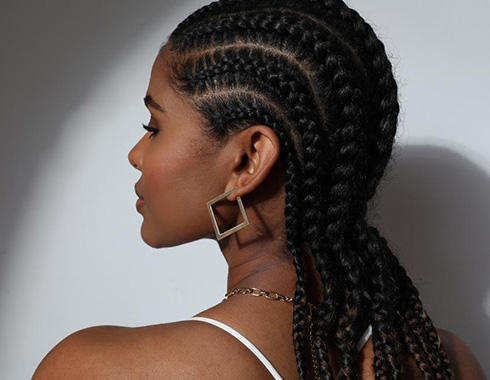To do African hair braiding, first, you need to pick the right kind of braid that suits the hair, budget, and lifestyle. Next, section and detangle the hair properly, and start braiding from the roots, ensuring you weave the hair tightly but not too tight to prevent breakage. Finally, secure the ends with a rubber band or thread. Maintaining the braids include regular washing, moisturizing, and keeping them tangle-free.
To do African hair braids, you will need to section off the hair into small, manageable sections. Then, take three small strands of hair and begin braiding, making sure to maintain tension throughout the braid. As you braid, add more hair to each strand until you’ve incorporated all of the hair in that section. Continue braiding until you reach the end of your hair and tie it off with an elastic band. You can create a variety of styles, including cornrows, box braids, and twists. It’s important to take breaks and not pull too tightly to avoid damaging the hair and scalp.
Kanekalon hair is a type of synthetic hair that is popularly used in hair extensions, weaves, and wigs. It is made of a monofilament synthetic fiber that is heat-resistant, lightweight, and durable. Kanekalon hair mimics the texture and appearance of natural hair, and can be styled and colored easily. It comes in a wide range of colors and textures, and is a cost-effective alternative to natural hair extensions. Kanekalon hair is also used in braiding styles such as box braids, twists, and cornrows, and is a favorite among individuals looking for low-maintenance protective hairstyles.
Adding kanekalon hair is a process of incorporating synthetic hair extensions into natural hair to enhance length and volume. The first step involves washing and conditioning natural hair thoroughly. The hair extensions are then selected based on colour, length, and thickness, and cut to the desired size. The next step involves braiding the natural hair into cornrows to provide a foundation for the extensions. The synthetic hair is then woven into the cornrows using the crochet method. The process is repeated until the desired fullness and length are achieved. Finally, the hair is styled and trimmed to finish the look. Overall, adding kanekalon hair can take several hours, and the result can last for several weeks with proper maintenance.
To add kanekalon hair to African braids, first, you need to section the hair into small sections with a pointed rat tail comb. Next, take the kanekalon hair and fold it in half, creating a loop at the top. Place the loop under the sectioned braid, and take the ends of the kanekalon and pull them through the loop. Pull tightly and continue braiding the sectioned hair with the kanekalon hair in a 3-strand braid. Repeat these steps until all sections have been braided with kanekalon hair, ensuring the braids are tight and neat. Finally, trim excess hair as desired and apply any leave-in conditioner of your choice.
African braids have become a trendy fashion statement and are often worn by celebrities and models. African braids are versatile, low-maintenance, and perfect for those with busy lifestyles or looking to protect their hair.







